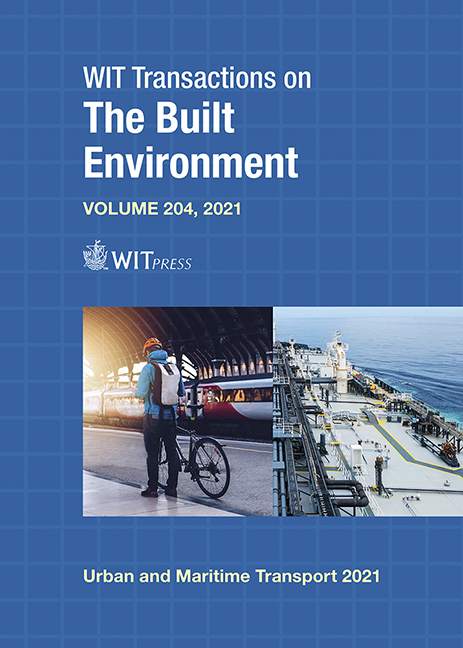MEASURING TRANSIT-ORIENTED DEVELOPMENT LEVELS: A METHODOLOGICAL FRAMEWORK TO INCORPORATE THE USER INTO MODELLING
Price
Free (open access)
Transaction
Volume
204
Pages
10
Page Range
157 - 166
Published
2021
Paper DOI
10.2495/UT210131
Copyright
Author(s)
SARA M. IBRAHIM, HANY M. AYAD, DINA M. SAADALLAH
Abstract
Worldwide, many cities have embraced the concept of transit-oriented development (TOD), as it is one of the most prominent approaches to land use and public transport integration. It is believed that measuring the existing TOD levels – ‘TOD-ness’ – of an area quantitatively is critical for TOD planning. However, a literature review reveals that spatial studies and quantitative methods that measure TOD-ness comprehensively are still limited and fragmented. Furthermore, recent research has opened the door to further investigation of methods and model development, which could bridge the gap between planning decisions and practical application. Due to the multidimensional aspects of the transport decision process and the involvement of many stakeholders, often with different points of view, the process has become more complex. Unfortunately, most of the spatial studies reviewed did not express the outcomes in terms of the impact on users, which can often prevent the realization of TOD implementation. To fill these knowledge gaps, this paper aims to suggest an integrated methodological framework that measures TOD-ness (including all stakeholders’ perceptions) and also considers the users’ opinions within their local context. The method developed extends from an existing framework commonly used by researchers, drawn from reviewing relevant studies published between 2000 and 2020. This paper reviews the studies in relation to TOD-ness measurement from a ‘methodological focus’, in which an overview of the dominant methods used is presented, in addition to their pros and cons. First, the paper introduces a theoretical review of the background of the concept, its evolution and the methods employed. An analytical review of the selected literature from different databases is then conducted. Finally, it is expected that the outcomes of the research will present the best-adopted methods and provide a developed model that measures TOD-ness quantitatively.
Keywords
transit-oriented development (TOD), TOD planning, TOD-ness, TOD level, TOD measurement, TOD index, multi-criteria decision making (MCDM)





